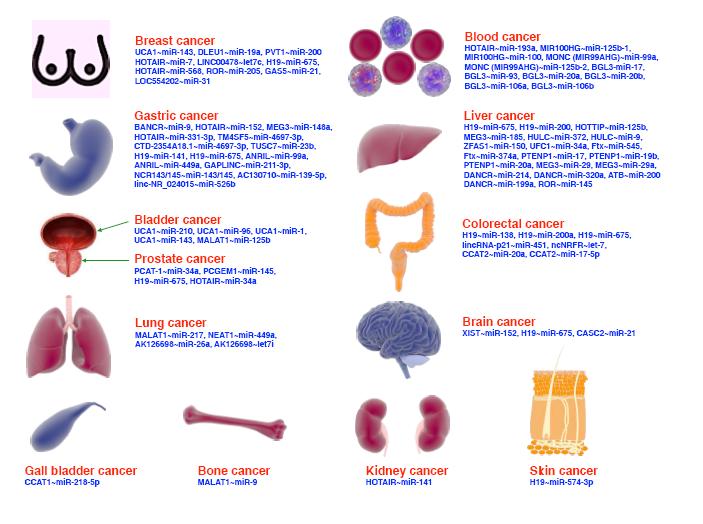| 1. |
Bray F, Laversanne M, Sung H, et al. Global cancer statistics 2022: GLOBOCAN estimates of incidence and mortality worldwide for 36 cancers in 185 countries. CA Cancer J Clin, 2024, 74(3): 229-263.
|
| 2. |
Wu F, Wang L, Zhou C. Lung cancer in China: current and prospect. Curr Opin Oncol, 2021, 33(1): 40-46.
|
| 3. |
Nicholson AG, Tsao MS, Beasley MB, et al. The 2021 WHO classification of lung tumors: impact of advances since 2015. J Thorac Oncol, 2022, 17(3): 362-387.
|
| 4. |
Yotsukura M, Asamura H, Motoi N, et al. Long-term prognosis of patients with resected adenocarcinoma in situ and minimally invasive adenocarcinoma of the lung. j thorac oncol, 2021, 16(8): 1312-1320.
|
| 5. |
Li X, Zhang W, Yu Y, et al. CT features and quantitative analysis of subsolid nodule lung adenocarcinoma for pathological classification prediction. BMC Cancer, 2020, 20(1): 60.
|
| 6. |
Deng J, Zhao M, Li Q, et al. Implementation of artificial intelligence in the histological assessment of pulmonary subsolid nodules. Transl Lung Cancer Res, 2021, 10(12): 4574-4586.
|
| 7. |
Fang W, Zhang G, Yu Y, et al. Identification of pathological subtypes of early lung adenocarcinoma based on artificial intelligence parameters and CT signs. Biosci Rep, 2022, 42(1): BSR20212004.
|
| 8. |
Wu G, Woodruff HC, Shen J, et al. Diagnosis of invasive lung adenocarcinoma based on chest CT radiomic features of part-solid pulmonary nodules: a multicenter study. Radiology, 2020, 297(2): 451-458.
|
| 9. |
Aydın N, Çelik Ö, Aslan AF, et al. Detection of lung cancer on computed tomography using artificial intelligence applications developed by deep learning methods and the contribution of deep learning to the classification of lung carcinoma. Curr Med Imaging, 2021, 17(9): 1137-1141.
|
| 10. |
Siegel RL, Giaquinto AN, Jemal A. Cancer statistics, 2024. CA Cancer J Clin, 2024, 74(1): 12-49.
|
| 11. |
张宏伟, 赵光强, 陈小波. ⅠA期肺腺癌手术方式的研究进展. 中国肿瘤临床, 2023, 50(11): 581-586.Zhang HW, Zhao GQ, Chen XB. Research progress in surgical approaches for stageⅠA lung adenocarcinoma. Chin J Clin Oncol, 2023, 50(11): 581-586.
|
| 12. |
Succony L, Rassl DM, Barker AP, et al. Adenocarcinoma spectrum lesions of the lung: detection, pathology and treatment strategies. Cancer Treat Rev, 2021, 99: 102237.
|
| 13. |
Herrera LJ, Dadzie K. The evolving field of sublobar resection: in search of the optimal operation or the optimal definition. J Thorac Dis, 2024, 16(5): 3531-3534.
|
| 14. |
梁云, 谢宁, 刁晶艳, 等. 人工智能量化参数预测肺结节浸润程度的临床价值. 中国胸心血管外科临床杂志, 2022, 29(7): 878-885.Liang Y, Xie N, Diao JY, et al. Clinical value of artificial intelligence quantitative parameters in predicting the invasiveness of pulmonary nodules. Chin J Clin Thorac Cardiovasc Surg, 2022, 29(7): 878-885.
|
| 15. |
Liu M, Wu J, Wang N, et al. The value of artificial intelligence in the diagnosis of lung cancer: a systematic review and meta-analysis. PLoS One, 2023, 18(3): e0273445.
|
| 16. |
Wei Z, Yang X, Feng Y, et al. Could concurrent biopsy and microwave ablation be reliable? Concordance between frozen section examination and final pathology in CT-guided biopsy of lung cancer. Int J Hyperthermia, 2021, 38(1): 1031-1036.
|
| 17. |
吴阶平医学基金会模拟医学部胸外科专委会. 人工智能在肺结节诊治中的应用专家共识(2022年版). 中国肺癌杂志, 2022, 25(4): 219-225.Thoracic Surgery Committee, Department of Simulated Medicine, Wu Jieping Medical Foundation. Chinese experts consensus on artificial intelligence assisted management for pulmonary nodule (2022 version). Chin J Lung Cancer, 2022, 25(4): 219-225.
|
| 18. |
Huang D, Li Z, Jiang T, et al. Artificial intelligence in lung cancer: current applications, future perspectives, and challenges. Front Oncol, 2024, 14: 1486310.
|
| 19. |
Mazzone PJ, Lam L. Evaluating the patient with a pulmonary nodule: a review. JAMA, 2022, 327(3): 264-273.
|
| 20. |
中华医学会呼吸病学分会, 中国肺癌防治联盟专家组. 肺结节诊治中国专家共识(2024年版). 中华结核和呼吸杂志, 2024, 47(8): 716-729.Chinese Thoracic Society, Chinese Medical Association, Chinese Alliance Against Lung Cancer Expert Group. Chinese expert consensus on diagnosis and treatment of pulmonary nodules (2024). Chin J Tuberc Respir Dis, 2024, 47(8): 716-729.
|
| 21. |
Pan W, Fang X, Zang Z, et al. Diagnostic efficiency of artificial intelligence for pulmonary nodules based on CT scans. Am J Transl Res, 2023, 15(5): 3318-3325.
|
| 22. |
Quanyang W, Yao H, Sicong W, et al. Artificial intelligence in lung cancer screening: detection, classification, prediction, and prognosis. Cancer Med, 2024, 13(7): e7140.
|
| 23. |
Park S, Lee SM, Noh HN, et al. Differentiation of predominant subtypes of lung adenocarcinoma using a quantitative radiomics approach on CT. Eur Radiol, 2020, 30(9): 4883-4892.
|
| 24. |
Jiang B, Zhang Y, Zhang L, et al. Human-recognizable CT image features of subsolid lung nodules associated with diagnosis and classification by convolutional neural networks. Eur Radiol, 2021, 31(10): 7303-7315.
|
| 25. |
Wang Z, Gao J, Li M, et al. DIEANet: an attention model for histopathological image grading of lung adenocarcinoma based on dimensional information embedding. Sci Rep, 2024, 14(1): 6209.
|
| 26. |
Ding H, Feng Y, Huang X, et al. Deep learning-based classification and spatial prognosis risk score on whole-slide images of lung adenocarcinoma. Histopathology, 2023, 83(2): 211-228.
|
| 27. |
Wang J, Yuan C, Han C, et al. IMAL-Net: interpretable multi-task attention learning network for invasive lung adenocarcinoma screening in CT images. Med Phys, 2021, 48(12): 7913-7929.
|

 1/5
1/5
